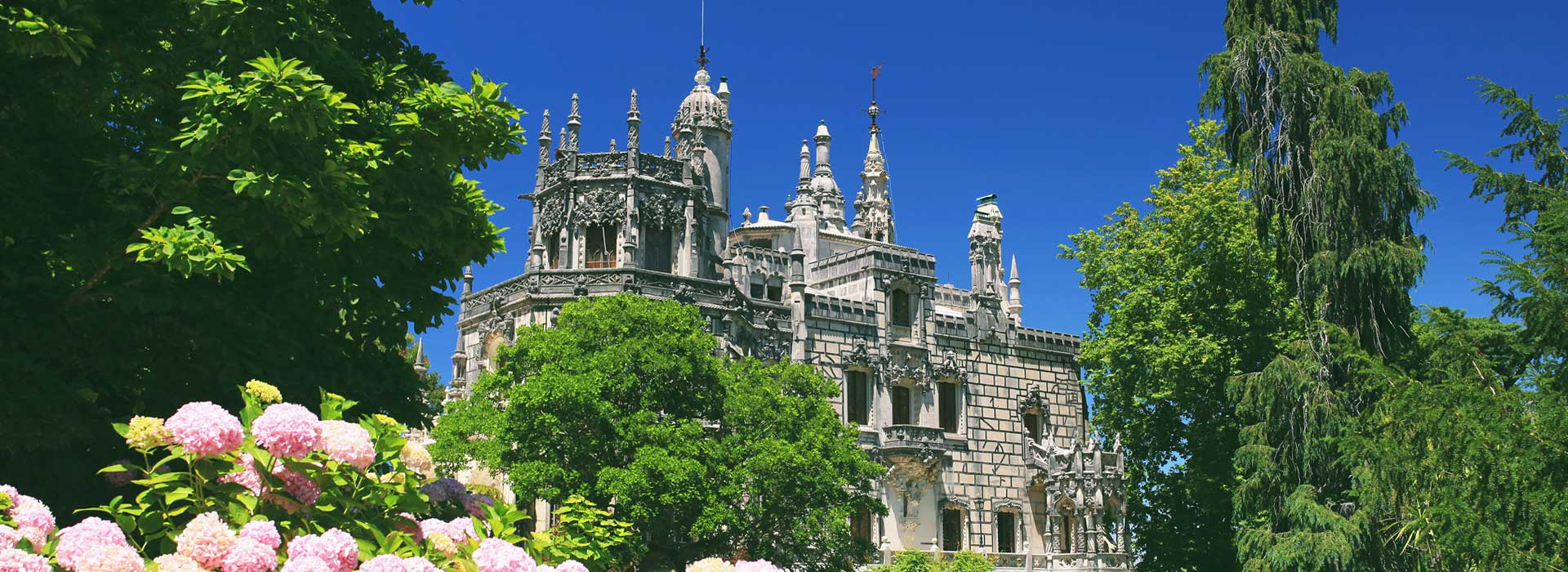
QUINTA DA REGALEIRA
Quinta da Regaleira, located near Sintra's historic centre, draws day-trippers from Lisbon seeking enchantment. For a seamless visit, rely on MADABOUTSINTRA.COM. Explore our comprehensive guides on sightseeing, dining, accommodation, and transportation. Discover suggested tours tailored to local attractions.
Constructed between 1904 and 1910, Quinta da Regaleira, also known as Palácio da Regaleira, graces the former estate of the wealthy Barons of Regaleira. Commissioned by António Augusto Carvalho Monteiro, the estate's design by Italian architect Luigi Manini reflects Neo-Manueline elegance. Its four-hectare expanse, encompassing the palace and verdant gardens, invites exploration of mystical and romantic realms. Amongst lakes, statues, and hidden caves, traces of alchemical symbolism and esoteric ideologies, including Freemasonry and Rosicrucianism, evoke wonder.
Designated a National Monument in 2002, the estate is under the stewardship of the CulturSintra foundation, ensuring its preservation for generations to come.
QUINTA DA REGALEIRA ONLINE TICKET & GUIDED TOUR

ONLINE TICKET
With this guided tour ticket you can gain entry to the Quinta da Regaleira at your leisure and enjoy the benefits of a well-informed guide. Buy online before you arrive to avoid queues and have the convenience of the e-ticket on your phone…
Book with confidence with the FREE CANCELLATION option.
• Pena Park & Palace/Quinta da Regaleira Combination tickets available
• Kids under Six get in free, no ticket required
Opening Times
October to April, Daily: 09h30 - 18h00, (last admission at 17h00)
May to September, Daily: 09h30 - 20h00, (last admission at 19h00)
![]() Lisbon Card: 20% discount (On the door)
Lisbon Card: 20% discount (On the door)
Contact Details
Quinta da Regaleira, 2710-567 Sintra, Portugal.
38° 47' 45.5" N | 09° 23' 44.45" W | +351 219 106 650
geral@cultursintra.pt | Website

THE MAIN HOUSE OF QUINTA DA REGALEIRA
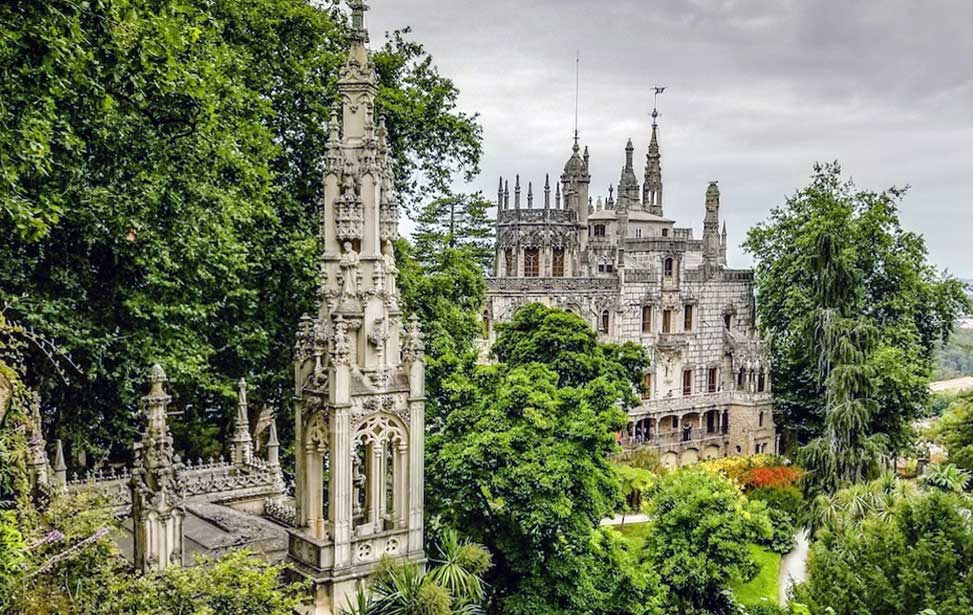
Quinta da Regaleira chapel and main building
The main façade of the house presents a striking sight, adorned with Gothic turrets, gargoyles, Manueline motifs, and an octagonal panoramic terrace, imbuing it with unparalleled charm. Featuring five floors, including a basement, the palace welcomes visitors through the courtyard, opposite the coffee shop, accessed by the central gate.
Upon entering, guests are greeted by the exquisite porch crafted from Coimbra limestone, setting the tone for the grandeur within. The first room, the octagonal Dining Room, captivates with its luminosity and ornate fireplace, complemented by a statue of a woodsman, amidst hunting-themed décor.
Across the corridor lies the Renaissance Hall, formerly the drawing room, boasting subtle tributes to Carvelho Monteiro and his wife Perpetua Auguste. Admire the chandeliers shaped like the Cross of the Order of Christ suspended from the ornate wooden ceiling. The ground floor also houses the King's room, once a billiards room adorned with portraits of the Portuguese monarchy. A balcony runs the length of the ground floor, offering panoramic views over the grounds below.
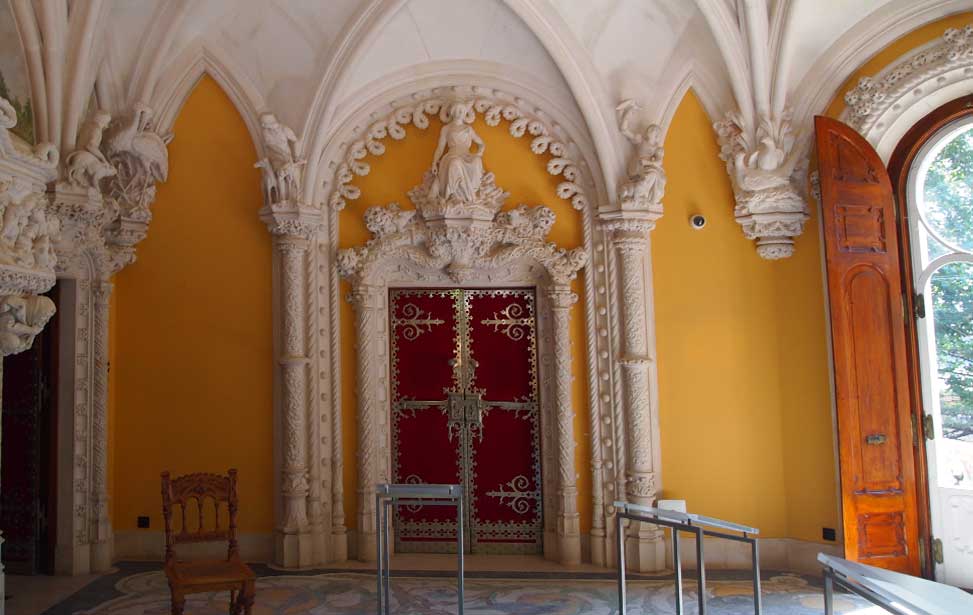
Dinning room
The first floor of the house is dedicated to family quarters, featuring bedrooms and a dressing room. The master suite includes the Lusiad Room, named after Luís Vaz de Camões' epic poem recounting Portugal's explorations. Inspired by the Templar Church of Tomar and the Temple of the Mount in Jerusalem, an octagonal turret graces the southern corner of the second floor, serving as Carvalho Monteiro's study.
On this floor, you'll also find staff quarters and storerooms. The third floor boasts a neo-gothic tower on the northern corner, housing a private office with access to rooftop terraces via a stairway to a laboratory. In the basement, reminiscent of a traditional "upstairs and downstairs" setup, are servant quarters, a kitchen, scullery, ironing room, refectory, and a dumb waiter.

TOP TOURS
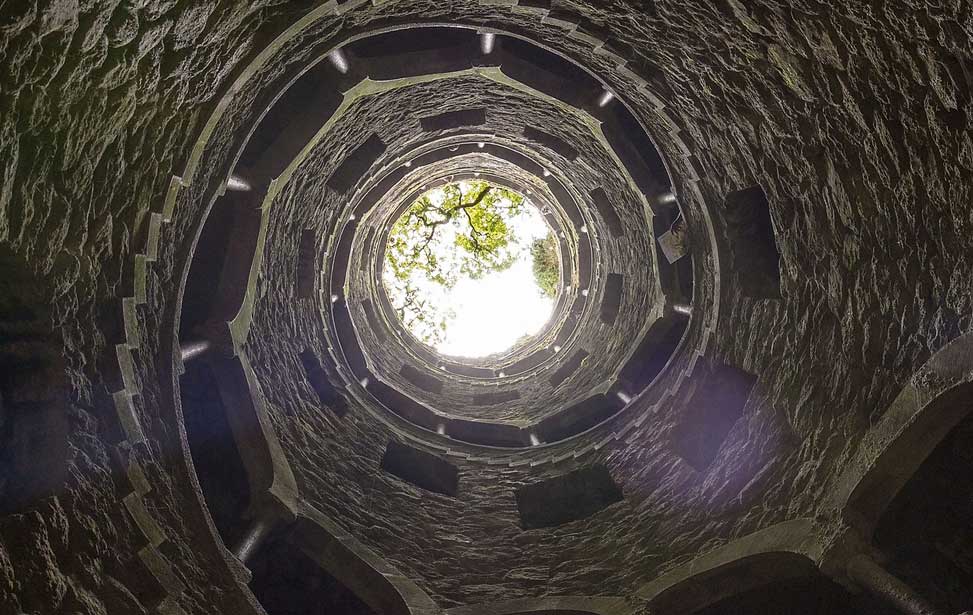
Quinta da Regaleira; Private Tour with Ticket
After departure from your hotel, we will make a pleasant private tour to the romantic village of Sintra. Quinta da Regaleira is one of the more amazing monuments. Situated near the historic centre of Sintra Village, with four hectares of lush gardens, lakes, caves and enigmatic buildings. After your unhurried visit, we will visit the westernmost point of the European continent, Cabo da Roca, a magnificent and wild place raised to 140 meters above its cliffs. Free time to visit this place, with bar, WC, and shop.
(74) | 4 Hr | ✔ Free Cancellation
Check Availability
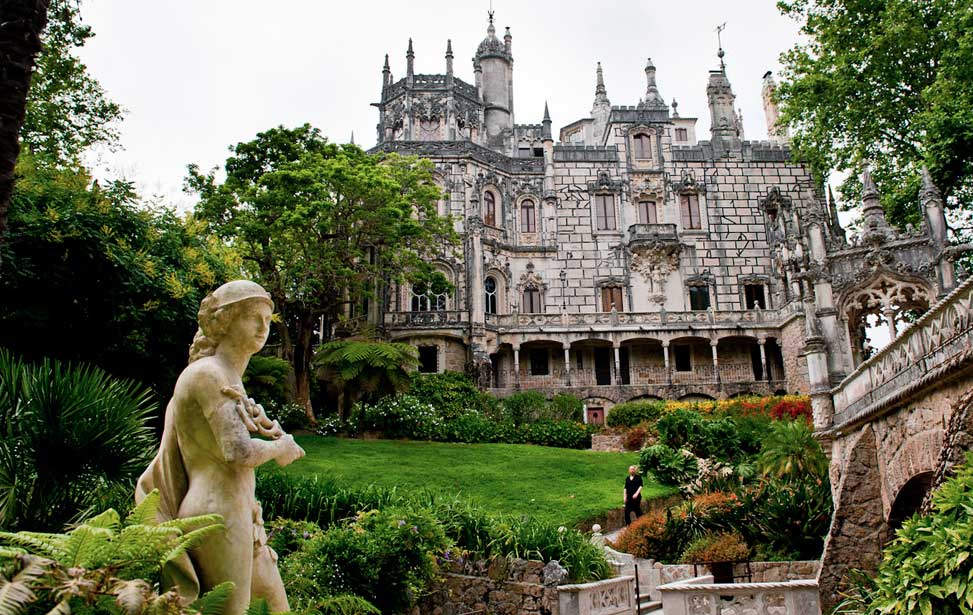
Sintra Pena Palace and Quinta da Regalheira. Most complete tour!
Take a break from the busy streets of Lisbon and head into the Sintra mountains for a day of exploring cultural and natural landmarks. With a small group, enjoy guided tours of Pena Palace and Quinta da Regaleira and a walking tour of the town centre. Then, head to the coast to see the views from Roca Cape before taking a stroll through the fishing village of Cascais. Visit a UNESCO World Heritage Site–Sintra’s centre. Learn about Portugal’s rich history and culture. Enjoy round-trip transfers from your Lisbon hotel. A small group means more attention from your guide.
(242) | 9-10 Hr | ✔ Free Cancellation
Check Availability

Quinta da Regaleira and wine tasting - All Inclusive
Come and enjoy our Quinta da Regaleira and Wine Tasting tour in Sintra! Come visit with us the highest exponent of the mystical aura of the mountains, down the famous Initiation Well. After lunch in Colares, it is time to enjoy a magnificent wine tasting of the region that will conquer your palate. We will then board the charming tram that departs from Praia das Macas to bring you back to Sintra to enjoy the regional sweets. Finally, we will take you to your hotel by the Cascais road so you can enjoy the beautiful breathtaking scenery.
(14) | 10 Hr | ✔ Free Cancellation
Check Availability
THE GARDENS AT QUINTA DA REGALEIRA
The themes of the garden are mystical and esoteric. They cover different epochs with such influences as Virgil, Dante, Templars, the Order of Christ and Freemasonry. A walk through the garden and its various monuments, fountains, caves, tunnels and towers is a metaphysical quest or initiation into the mysteries of the cosmos or perhaps, just a playground to suit Monteiro's whim… I'll let you decide.
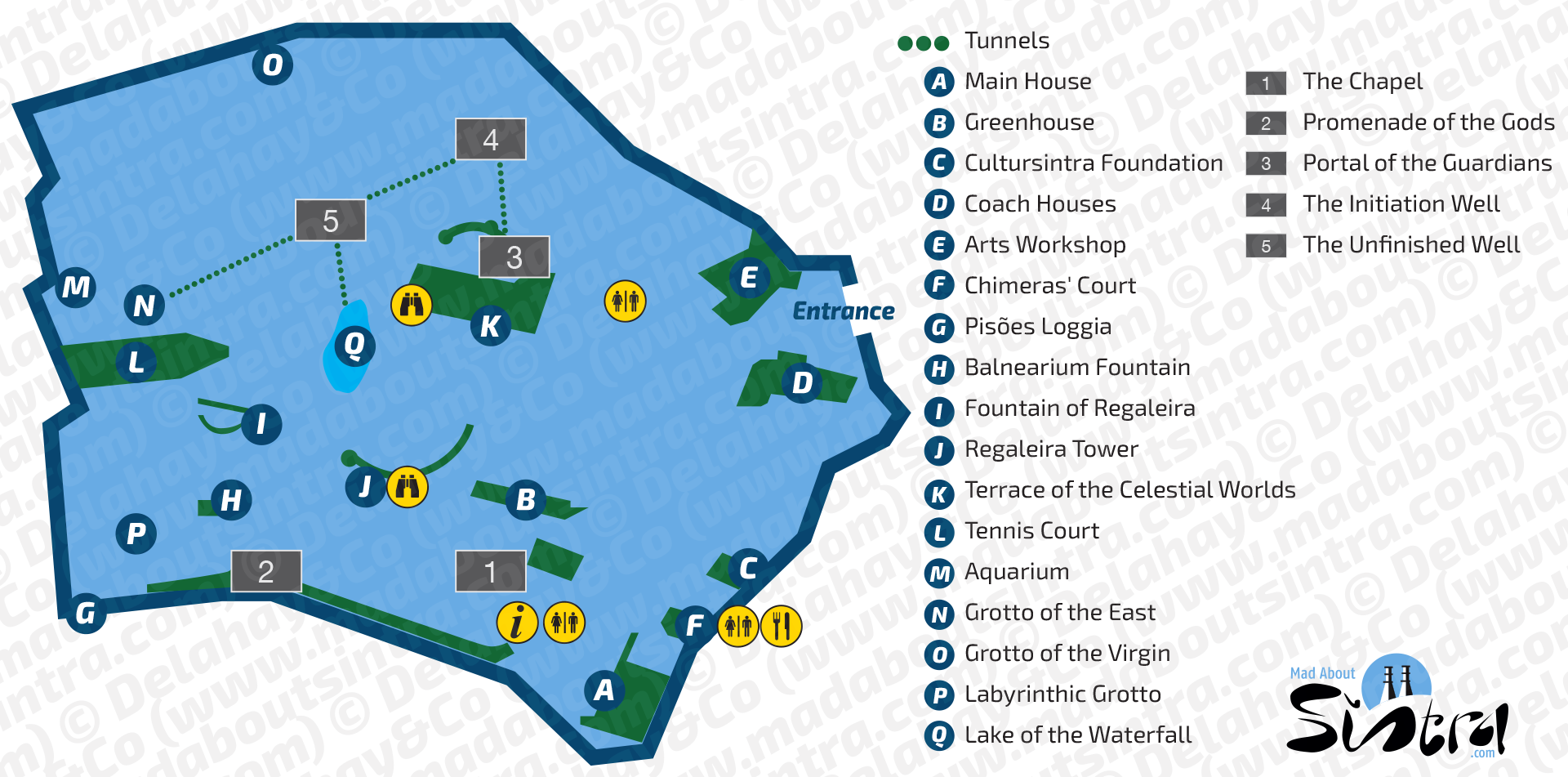
Map of the Quinta da Regaleira grounds © Delahay&Co
COMBINATION DEALS
Save even more money with these popular combination tickets. Book with confidence with the FREE CANCELLATION option.
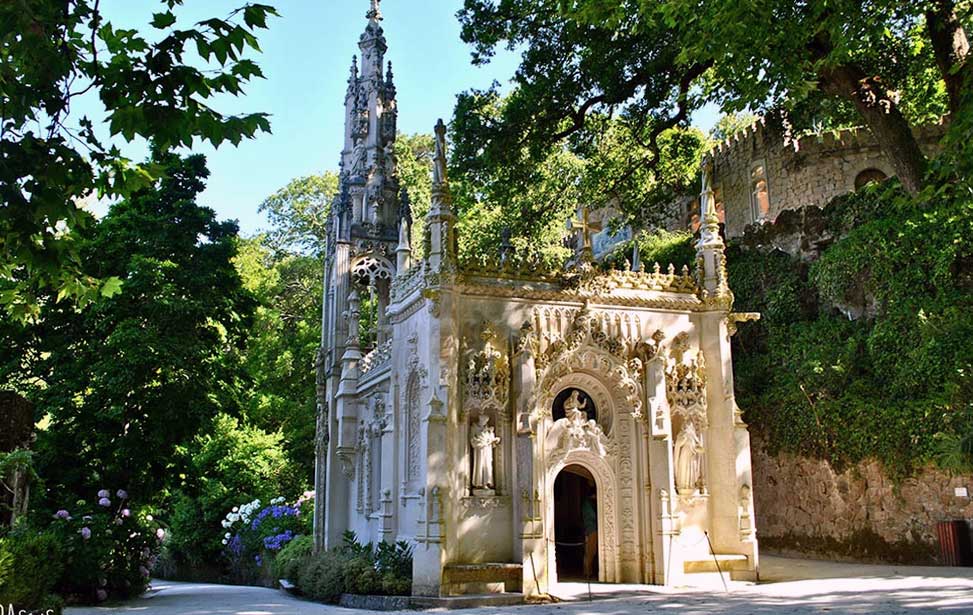
1
The Chapel
Facing the main house stands a charming chapel constructed in the Neo-Manueline style using pristine white stone. Inside, a captivating blend of Christian and occultist imagery awaits. Iconography featuring Mary and Christ coexists with nuanced Templar and Freemason symbols. The chapel's floor showcases depictions of the Portuguese armillary sphere and the Order of Christ cross, encircled by pentagrams. A stained glass window portrays Dom Fuas Roupinho hunting a reindeer over a cliff.
Beneath the crypt lies an entrance to a subterranean passage that leads to the basement of the main house.
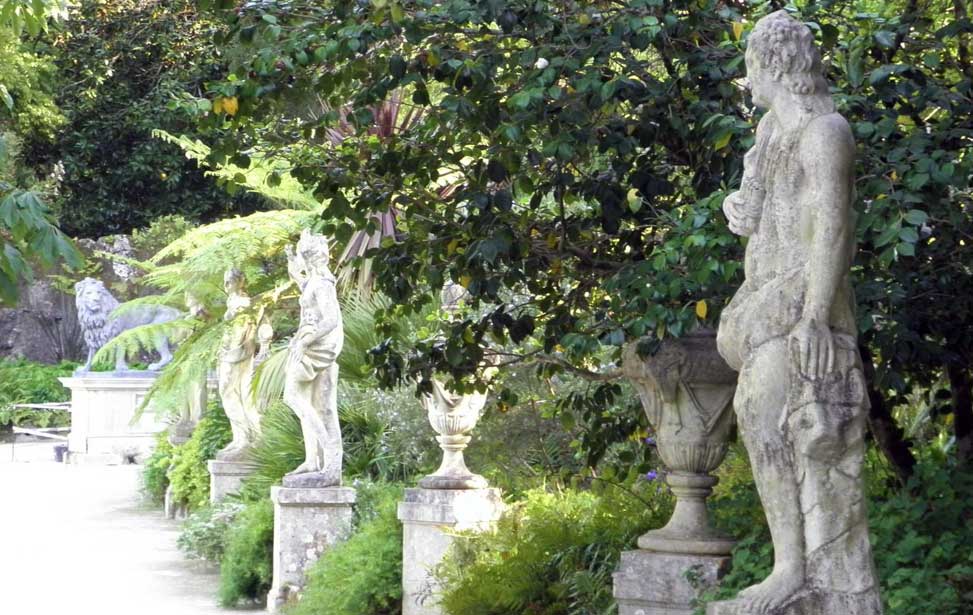
2
Promenade of the Gods
The Promenade of the Gods at the lower end of the grounds is an enchanting feature of this mystical estate. This avenue leads visitors through lush gardens adorned with statues and symbols of ancient mythologies. The promenade evokes a sense of wonder and intrigue. As visitors stroll along this path, they encounter various statues representing deities from different cultures, including Greek, Roman, and Egyptian mythology. One can encounter such gods and goddesses as Orpheus, Venus, Hermes, Flora, Ceres, Pam, Volcan and Dionysus. Dionysus is an important figure in Freemasonry. There are references to her throughout the estate. The avenue ends at the Pisões Loggia, an alternative entrance into the grounds.
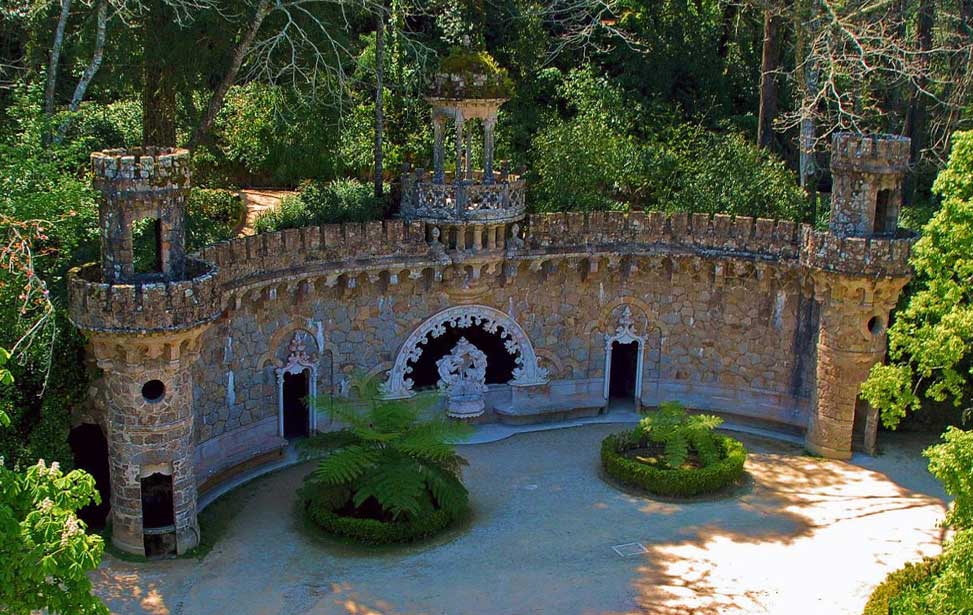
3
Portal of the Guardians
One of the many water features found within the grounds of Quinta da Regaleira is the curious Portal of the Guardians. This long curved ornate structure is adorned with intricate carvings and symbolic motifs. Two towers flank the structure and at its centre is a curious arch. It is richly decorated with esoteric symbolism, reflecting the spiritual and philosophical beliefs of its creator, António Augusto Carvalho Monteiro. Inviting visitors into a realm of mystery and intrigue is a statue of two reptilian creatures holding a large seashell, symbolising the protectors of hidden knowledge and the gatekeepers of ancient wisdom. Designed with Neo-Manueline architectural flair. The Portal of the Guardians is a hidden entrance to a tunnel leading to the Initiation Well.
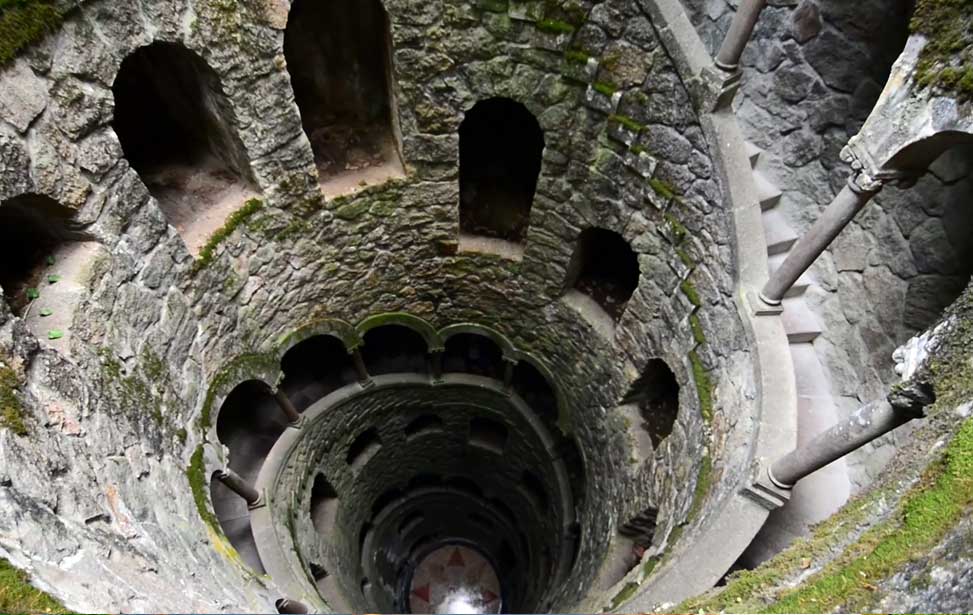
4
The Initiation Well
Not really a well, but an inverted tower that descends/ascends 27 metres (88 ft) with a spiral staircase winding its way around the perimeter and playing tricks on the senses. The true purpose of the well, and its intriguing name, is unknown. Tantalising clues can be found within its symbolism. At the base, the pattern on the floor is a compass overlaying a Templar Cross, thought to be Monteiro's coat of arms. The staircase contains nine platforms reminiscent of the nine circles from the Divine Comedy by Dante, the nine levels of Purgatory and the nine skies which constitute Paradise.
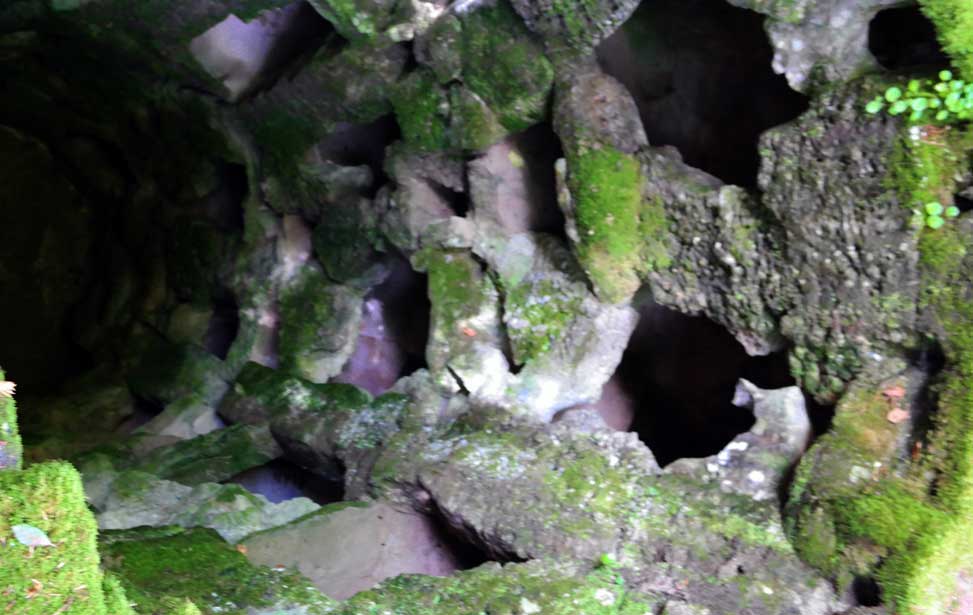
5
The Unfinished Well
A second smaller "well" is found nearby, a tunnel that links the two. Known as the Unfinished Well, it contains a series of straight staircases that join the ringed platforms, the spacing in-between which and the number of steps is said to have special Masonic significance. The Unfinished Well is much darker, damp, more claustrophobic, and exudes an unnerving eeriness.
B. Greenhouse. This temple of Flora is a reflection of Carvalho Monteiro's fondness for botany. The panel of tiles on the façade depicts a group of priestesses conducting a fertility rite.
E. Arts Workshop. Originally, this was the servants quarters, a workshop and a generator which powered the whole estate. Now a venue for music rehearsals, art workshops and exhibitions.
F. Chimaeras' Court. This terrace is now used for the seating area of the café.
G. Pisões Loggia. An ornately decorated loggia in the Neo-Manueline style lined with azulejo tiles which were used as an alternative entrance to the estate.
H. Balnearium Fountain. Located between the lion statue and the Gruta do Labirinto, the Balnearium Fountain sadly has seen better days. In between the two windows, the central arch contains a mosaic depicting two herons.
I. Fountain of Regaleira. Also known as the Fountain of Abundance, this ornate fountain is decorated in an Arabesque mosaic.
J. Regaleira Tower. A fairy tail turret with amazing views of the Sintra mountain and the Moorish Castle above.
 Lisbon Card Discounts
Lisbon Card Discounts


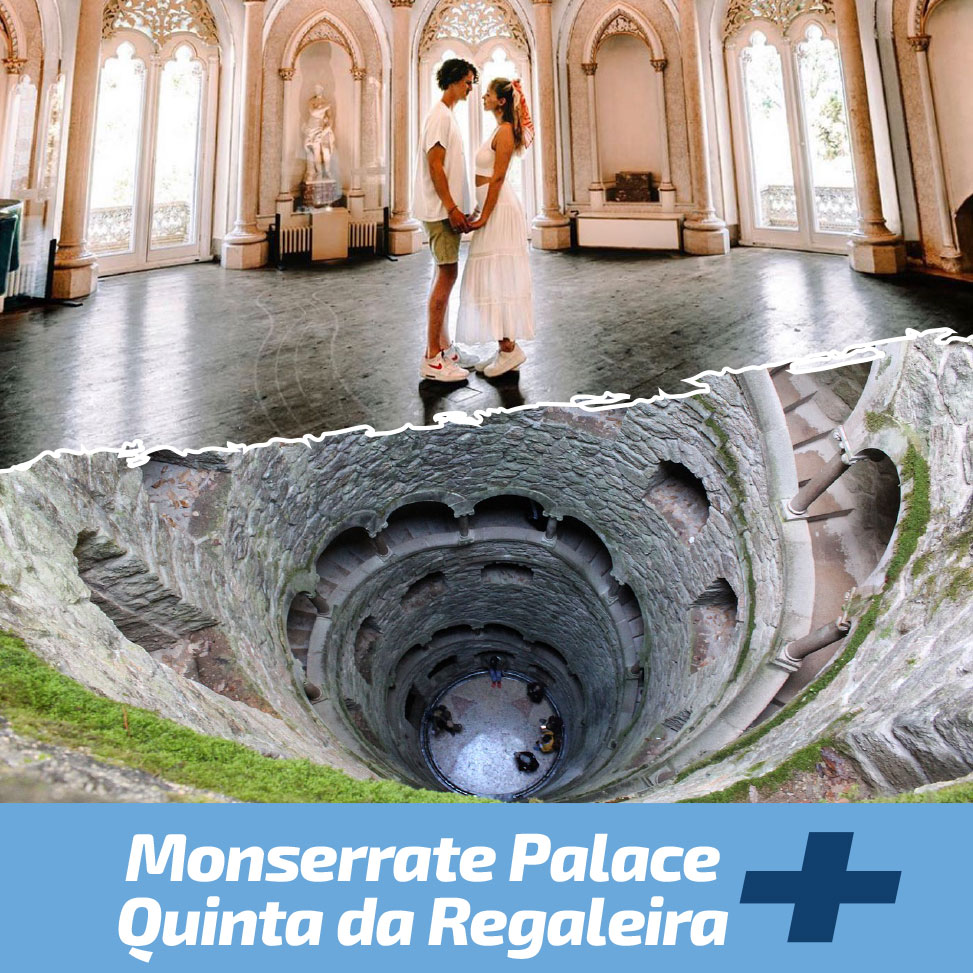
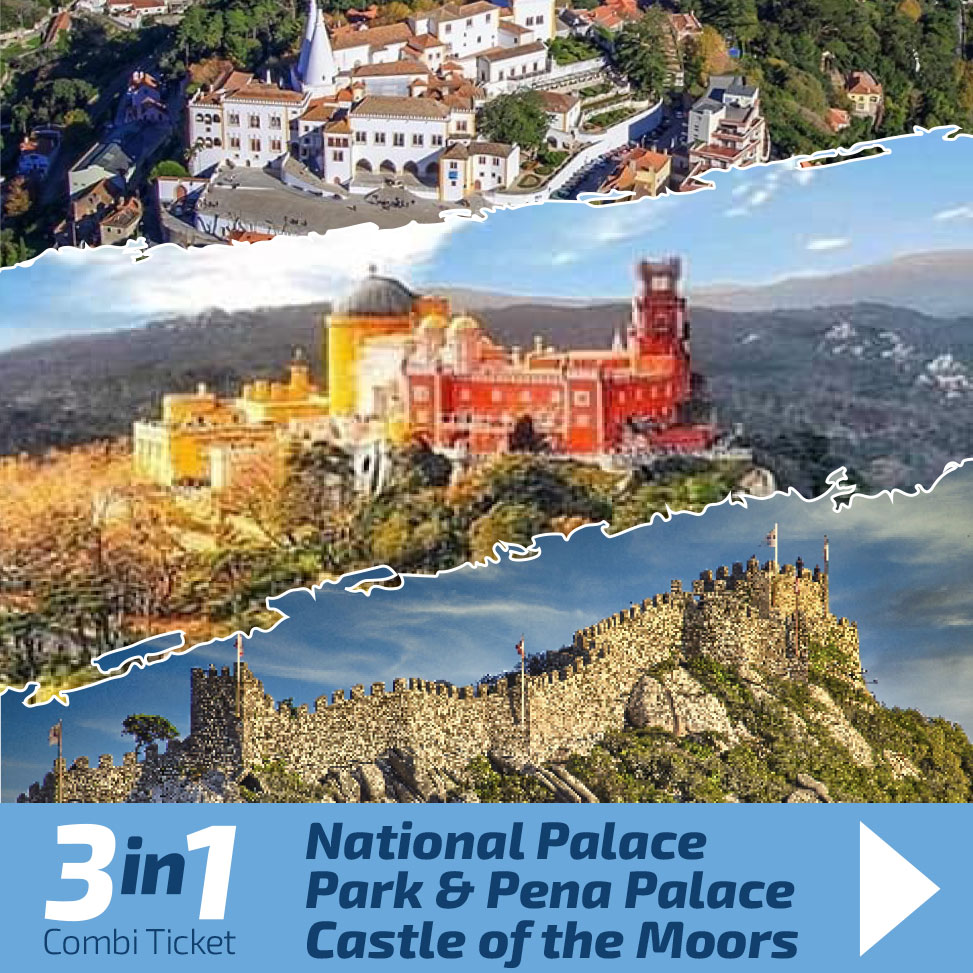

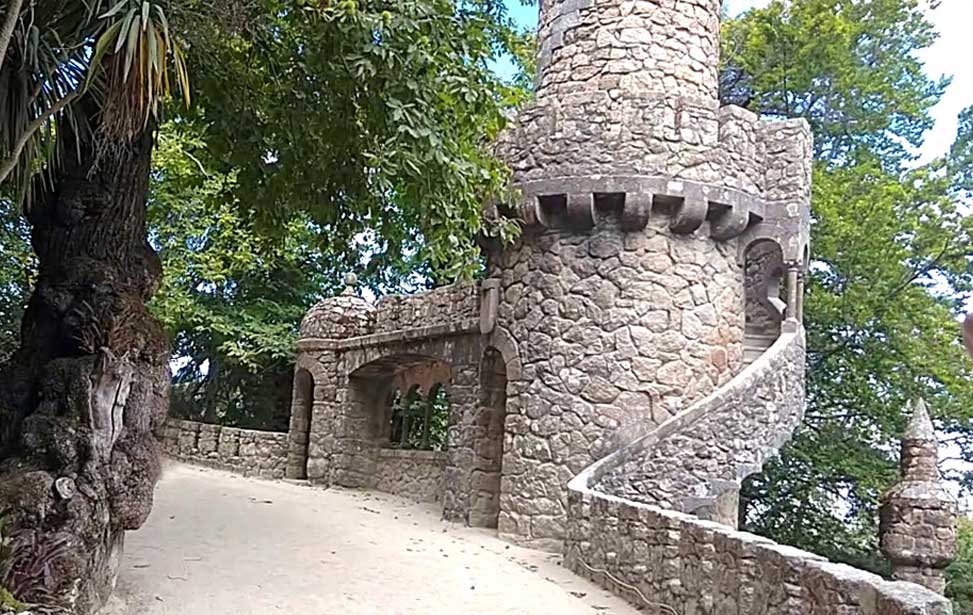
 Travel & Tourism Awards 2024, Best Lisbon Travel & Cultural Guide 2024 - UK
Travel & Tourism Awards 2024, Best Lisbon Travel & Cultural Guide 2024 - UK

